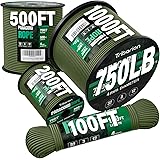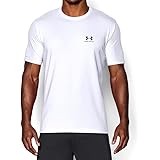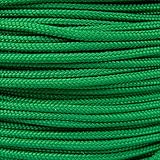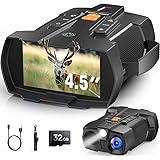Statistics show that unexpected injuries or ailments can significantly impact an outdoor adventure. While many basic needs are often considered, the critical items for a hiking first-aid kit are sometimes overlooked. As expertly highlighted in the accompanying video, there are 10 indispensable supplies that form the foundation of preparedness for any wilderness excursion, transforming potential crises into manageable situations. This guide expands on these essentials, providing deeper insights for building a robust outdoor first-aid kit.
Assembling Your Essential Hiking First-Aid Kit
Building a reliable first-aid kit for hiking is a foundational step in responsible outdoor adventuring. Each component serves a vital role, ensuring that minor inconveniences do not escalate into serious problems. The following items, endorsed by wilderness medicine experts, are considered non-negotiable for basic outings, forming the bedrock of any effective wilderness first aid kit.
Protection and Preparation: Medical Gloves
First aid situations often involve exposure to bodily fluids, making medical gloves an absolute necessity. Their inclusion protects both the rescuer and the injured party from potential contamination. These thin barriers are like an invisible shield, safeguarding against pathogens while maintaining hygienic conditions for wound care. Always pack at least two pairs, ensuring a clean and safe environment for critical care.
Precision Cleaning: Irrigating Syringe
Cleaning a wound thoroughly is paramount to preventing infection in the backcountry. An irrigating syringe, filled with purified water, is specifically designed for this purpose. The focused pressure from its small tip effectively flushes out debris, akin to a miniature power washer for small cuts, ensuring wounds are pristine before dressing. This specialized tool is considerably more effective than simply pouring water over an injury.
Removing Intruders: Tweezers
Small splinters or stubborn bits of trail debris can cause irritation and potential infection if not removed promptly. A sturdy pair of tweezers becomes invaluable in these moments, acting as a precise tool for delicate extractions. This seemingly minor item is often lauded as an essential problem-solver for focused wound management, preventing larger issues from festering beneath the skin.
Infection Control: Antibiotic Ointment
Once a wound is clean, antibiotic ointment is applied to further reduce the risk of infection. A tube format is often preferred over individual packets for ease of use and reduced waste during application. This protective layer functions as an antiseptic guardian, promoting a sterile environment for the healing process to begin. Its application is a simple yet powerful step in preventing complications.
Advanced Wound Dressing: Hydrogel-Based Bandages
For wounds and blisters encountered on the trail, hydrogel-based bandages offer superior protection and accelerated healing. Their strong adhesive properties ensure they stay put, even in challenging conditions. The clear material allows for continuous monitoring of the wound, while the hydrogel keeps the area moist, which is understood to facilitate faster recovery. A selection of sizes is always recommended, like a versatile wardrobe for different wound dimensions.
Blister Prevention and Treatment: Kinesiology Tape
Blisters are a common bane of hikers, but Kinesiology tape offers a remarkably effective solution. These smooth, thin, and stretchy strips are ideal for preventing ‘hot spots’ from developing into full-blown blisters. Furthermore, they are often used to secure other blister dressings, acting as a flexible, second skin that moves with the body. Its adaptability makes it a superior choice over traditional options.
Versatile Coverage: Regular Bandages and Gauze
A comprehensive kit includes a variety of regular bandages for everyday cuts and scrapes, ensuring that minor abrasions are adequately covered. For larger wounds, sterile gauze is indispensable for absorbing fluids and providing a protective layer. The investment in non-stick gauze is always recommended, as its removal is considerably less painful, preventing further trauma to delicate healing tissue. This thoughtful inclusion makes post-injury care much more humane.
Support and Stability: Athletic Tape
A full roll of athletic tape is a multi-purpose tool in any hiking first-aid kit. Its robust adhesive properties make it perfect for taping sprains, providing crucial support to injured joints. It is also often employed in building improvised splints or simply securing wound dressings firmly in place, serving as a steadfast anchor in various emergency scenarios. This item is as versatile as a multi-tool for stabilization and protection.
Flexible Support: Elastic Wrap
For joint support and consistent pressure application, an elastic wrap is an excellent alternative to tape. It is particularly useful for sprained joints, offering adjustable compression and greater comfort over extended periods. This reusable item is also frequently integrated into splint construction or used to apply direct pressure to control bleeding, adapting to different needs with ease. It provides a gentler, yet firm, embrace for injured limbs.
Personal and Over-the-Counter Medications
While personal prescription medications are a non-negotiable inclusion for individuals, a general hiking first-aid kit should also contain essential over-the-counter options. Antihistamines are crucial for managing allergic reactions, which can range from minor irritations to severe conditions. Pain relievers and anti-inflammatories are vital for discomfort and swelling, though careful adherence to dosing directions is always emphasized for safety. These medications are like a calming balm for the body’s unexpected protests.
Beyond the Basics: Customizing Your Outdoor First-Aid Kit
While these 10 items form an excellent foundation, a truly effective first-aid kit is always tailored to the specific adventure. Considerations such as the length of the trip directly influence the quantity of supplies needed, with longer excursions requiring more provisions. The terrain, whether rugged mountains or dense forests, also dictates potential injuries and necessary items, perhaps necessitating specialized tools for snake bites or severe lacerations. Furthermore, the number and medical history of individuals in the group should inform medication choices and specialized equipment, making each kit a personalized tool for outdoor safety.
The Most Important Tool: Wilderness First Aid Knowledge
Despite having a perfectly stocked first-aid kit, the most crucial component for effective wilderness care is knowledge. Understanding how to use each item, assess an injury, and implement appropriate treatment protocols is paramount. Formal training, such as a wilderness first aid class, equips adventurers with the skills to confidently handle emergencies. This educational investment is often considered more valuable than any physical item, as it empowers individuals to make informed decisions under pressure, ensuring that preparedness goes beyond just supplies. Ultimately, a well-stocked hiking first-aid kit is merely a collection of tools; true readiness is found in the hands and mind that wield them effectively.











